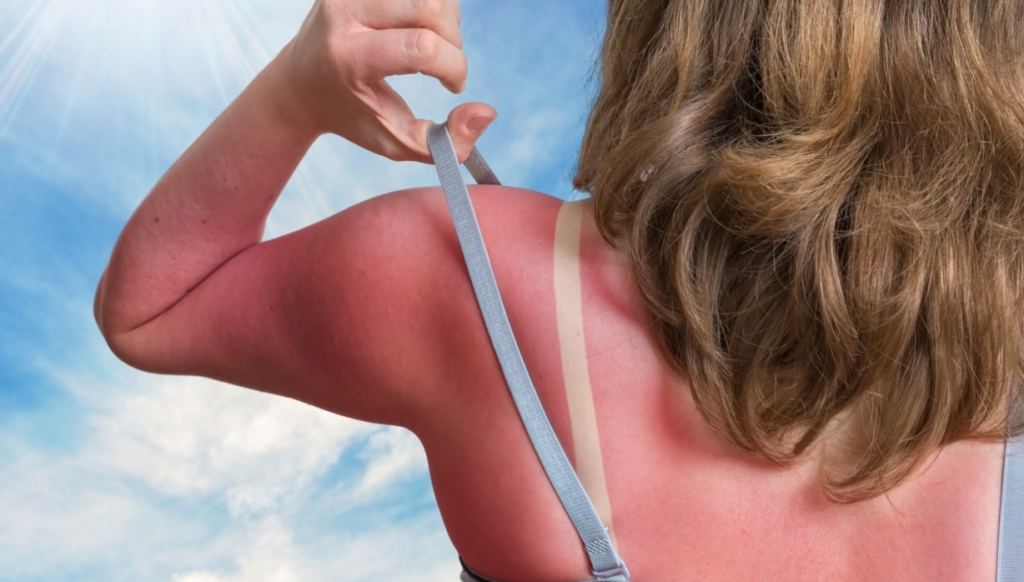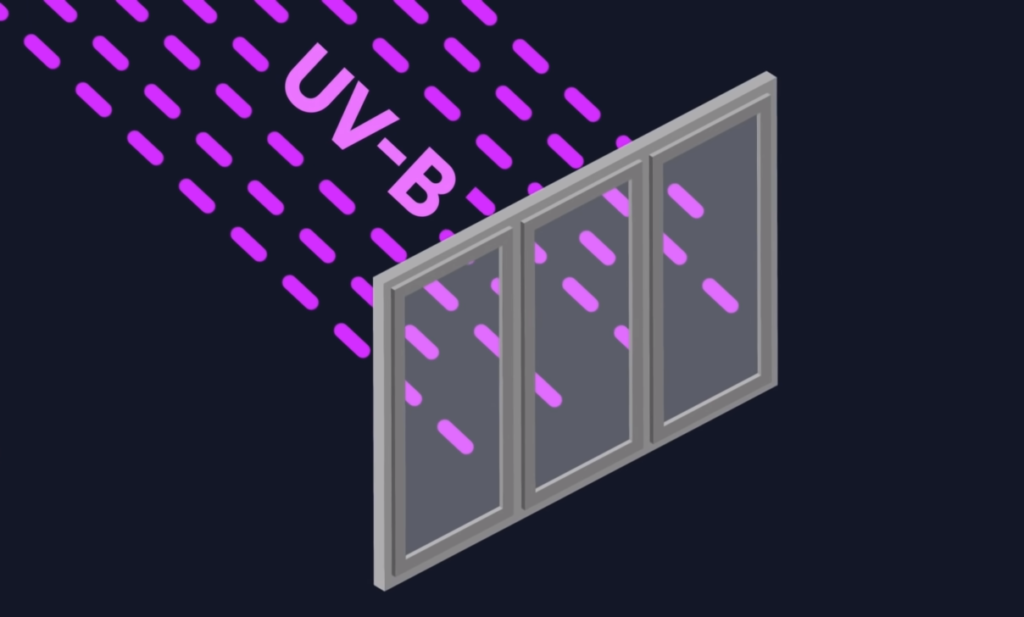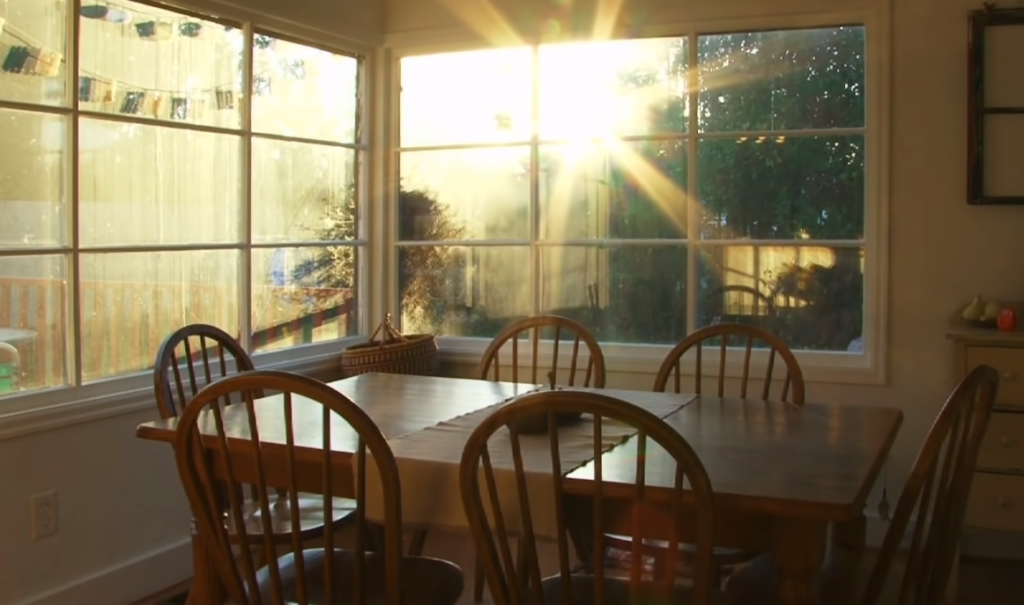There’s nothing worse than being out in the sun and realizing that the clouds have rolled in, blocking your chance to get a tan. Or is there? In this epic guide, we’ll answer all of your questions about tanning through clouds. From whether it’s possible to how to do it, we’ve got you covered! So read on and learn everything you need to know about getting that perfect glow no matter what the weather is like.
Table of Contents
How Does the Tanning Process Work in General?
Tanning has become increasingly popular in recent years because of its many benefits. Tanning gives your skin a healthy glow and can help even out skin tone and reduce the appearance of age spots or blemishes. It can also help improve the elasticity and texture of your skin, making it appear refreshed and youthful.

The tanning process is a complex one however. In general, the ultraviolet (UV) radiation from the sun penetrates your skin and causes a reaction that changes the color of your skin cells. This is called melanin production.
So Can You Still Get Tan Through Clouds?
The answer is yes, you can still tan through clouds. Clouds block out some of the sun’s rays but they don’t fully block out all UV radiation. So while it might seem like you aren’t getting any sun when there are clouds in the sky, your skin can still absorb some of the rays that manage to pass through them.
That said, it is important to note that you will get more intense exposure if there are no clouds blocking the sun’s rays. Additionally, it’s important to remember that even though you can still get a tan through clouds, the effect will be much less noticeable than if you were in direct sunlight. [1], [2]
Do You Need to Follow Safety Procedures When Tanning on a Cloudy Day?
One thing to bear in mind is that you should still follow safety procedures when tanning on a cloudy day, as UV radiation can still cause sunburn and increase your risk of skin cancer. It’s important to always use sunscreen with at least SPF 30 when tanning, regardless of the weather or intensity of the sun.
You should also make sure you are aware of how much exposure you are getting and limit your time in the sun if it starts to feel too hot or uncomfortable. If possible, try to stay out of direct sunlight during peak times (generally 10am – 4pm) when the UV rays will be strongest. Try to stay in more shaded areas if possible, and take regular breaks in the shade or indoors. [1], [2]
How to Safely and Properly Tan When It’s Cloudy
Still, with the right precautions, it is possible to safely tan through clouds. The key thing to remember is that you won’t get as intense of a tan in cloudy weather as you would if it were sunny out. So if you want to build up a nice golden glow, it’s important to be mindful of your sun exposure and take breaks during peak hours. In this section we will discuss how to properly tan when it’s cloudy outside.
Tan in the early morning or closer to evening
The best time to tan through clouds is in the early morning or closer to evening. This is because the sun’s UV rays are weaker at these times, and are more easily diffused by the clouds. So if you want a light tan without having to worry about getting burned, try to stick with these times of day.
A good rule of thumb is to avoid tanning during peak hours (10 a.m. to 4 p.m.). Also, look for days with high UV index ratings—days when the clouds are thinner and more transparent will have higher UV ratings, allowing you to tan through the clouds more effectively.
Clouds can filter out some of the UV radiation from the sun but it doesn’t offer 100% protection. If you’re new to sunbathing and want to build up your tolerance, spending a few days with cloudy weather can help you out.

Pick the spot with the least cloud coverage
Once you’ve decided when to tan, it’s important to pick a spot with the least cloud coverage. This is because clouds can reduce the amount of UV radiation that reaches your skin by up to 60%. Therefore, if you find an area with fewer clouds in the sky, you will be able to get a better tan.
You might even want to consider traveling somewhere with clear skies during peak sunny hours—just remember to apply sunscreen and wear protective clothing such as hats and sunglasses if you do decide to go out in direct sunlight.
Apply a tanning lotion
When it comes to tanning in cloudy weather, few people think about using a lotion, especially when there is cloud coverage. Many believe that the sun isn’t strong enough through clouds for you to get a tan; however, this isn’t necessarily true.
As we mentioned many times already, although the direct rays of the sun are blocked by most clouds, some ultraviolet (UV) radiation still passes though. This means that even on cloudy days, if you are in an area with high UV index ratings, you can still get tanned – albeit not as quickly as with clear skies – but at higher risk of getting sunburnt as well. The reason why is because your skin doesn’t have the protection against overexposure to sunlight it would usually have, if the sun was shining brightly.
That’s why it’s important to use a tanning lotion even when tanning on cloudy days. A tanning lotion helps to filter out some of the UV radiation that can penetrate through clouds. It also provides protection against skin damage caused by UVA and UVB rays.
When choosing a sunscreen or tanning lotion for cloudy weather, make sure that it has an SPF rating between 30 and 50 for maximum protection from the effects of UV radiation. Also, be sure to apply your sunscreen liberally – about two tablespoons should do – and reapply it every two hours or after swimming.

Stretch out on a towel or lounge chair
Now that you’ve decided when and where to tan, it’s time to find the perfect spot. When selecting a place in which to sunbathe, look for somewhere with little shade or obstruction from buildings or trees – this will make sure that your skin is exposed to as much of the sun’s rays as possible.
Make sure you feel comfortable in your spot and the temperature is just right – after all, you don’t want to be too hot or cold. Once you’ve found the ideal location, it’s time to get settled in.
Tan for 5-10 minutes on each side
Once you’re all set up, it’s time to start tanning. It is advisable to limit your exposure to the sun for 5-10 minutes on each side so as not to overdo it and get sunburned.
This is also important in order to get an equal tan all over your body. So, for instance, if you are lying on your back, turn onto each side for 5-10 minutes before turning over to the other side and repeating the process. This will ensure an even tan without too much exposure to UV rays.
Built up your tan gradually
Nothing good will come out if you will tan for several hours during a single day. Tanning is a process and you should give your skin the time to adjust itself.
Do small tanning sessions daily, preferably in the morning or late afternoon to avoid direct sunlight. Try to start with 15 minutes, then you can increase the duration of your tanning session as your skin gets used to it. Depending on how much UV radiation your location receives, a good rule of thumb is to spend no more than 30 minutes in direct sunlight per day if you are trying to build up a tan gradually.
By doing this, your body will be able to adjust to the new environment and won’t get burnt or damaged. This way, you’ll also be able to achieve that beautiful golden tan that you want without having to worry about overexposure. [1], [2]

Additional Tanning Tips
So, now you should know the basics of tanning through clouds. To ensure that your skin stays healthy and safe, we decided to include some additional tips that you should consider.
Stay hydrated
When you are out in the sun, it is important to stay hydrated. Sun exposure can cause dehydration due to sweating and increased body temperature.
Hydration will also help your body maintain its fluids and energy levels, especially when you are in direct sunlight for a long period of time. Proper hydration can help you avoid dehydration, which can lead to fatigue, headaches, and even heatstroke in extreme cases.
In addition, drinking plenty of water prevents sunburn by helping your skin retain moisture, as well as protecting it from the harmful UV rays of the sun. Finally, staying hydrated may improve the overall effectiveness of any tanning products that you use since they are more readily absorbed into the skin if it is adequately hydrated.
Take a shower after tanning
After tanning, it is important to rinse off in the shower as soon as possible. This helps to prevent any residue from building up on your skin and protects you from future skin damage. A thorough rinse also removes bacteria that can cause infection or irritation if left on your skin and the sun protectors that you applied.
It is best to use warm water for rinsing off after tanning to open pores and help remove any oils, lotions, and other residues that may have been left behind during the tanning process. Additionally, a cool washcloth can be used to gently scrub away any residual products on the skin.
Using a pH-balanced cleanser or body wash will further help to ensure all of the product has been removed from your skin. Do not use any soap with harsh ingredients as these can dry out your skin and strip away natural oils.

Always apply moisturizer after tanning
After being exposed to the sun, your skin needs extra nourishment and hydration. Applying a moisturizer helps replenish the oils lost during tanning and provides extra protection against potential irritations or sunburns. Moisturizers containing aloe vera, shea butter, vitamin E and other natural ingredients are great for this purpose as they help soothe, heal, and protect the skin from further damage. Using a good quality moisturizer will also help keep your tan looking vibrant for longer.
Try to use products that are specifically designed for tanned skin in order to maintain its beauty. These kinds of products usually have ingredients such as aloe vera and vitamin E which can provide your skin with additional nourishment.
Moisturizing not only will make your tan look better, but it will also help to prolong the life of a tan and help maintain healthy skin. Make sure to apply a moisturizer every day, even if you are not tanning, in order to prevent any dryness or damage to your skin.
Protect your eyes
Even if you can’t see the sun through the clouds, UV rays can still penetrate and cause damage to your eyes. So it is important to wear sunglasses or use an umbrella hat when you are out in the sun. This will protect your eyes from the harmful UV rays and also keep them cool while you tan. Wearing sunglasses is especially important if you plan on spending a long time outside in direct sunlight as this will reduce the chances of getting eye strain or headaches due to overexposure.
Take care of sunburns asap
If you do happen to get a minor sunburn, make sure to take care of it as soon as possible. Sunburns can cause skin damage, so applying a moisturizer or aloe vera gel can help reduce the redness and pain associated with them. Additionally, taking cool showers or baths will help to soothe the skin and provide some relief from the discomfort of sunburns.
It is also important to seek medical attention if your sunburn does not improve after several days. This could be an indication of more serious skin damage that requires professional treatment. Remember, prevention is always better than cure when it comes to protecting yourself from the harmful effects of the sun’s rays! [2]

FAQ
What speeds up your tan?
Sun exposure is the most important factor in helping you acquire a tan. To speed up the process, there are several steps that can be taken. Firstly, it’s important to increase your exposure time gradually over multiple sessions. This will help build up your skin’s resistance to sunlight and prevent sunburn. Secondly, applying sunscreen with a sun protection factor (SPF) of at least 30 can help protect your skin from the damaging UV rays while giving you enough tan. Additionally, it’s important to be aware of the time of day and season when you’re exposing yourself to sunlight.
How long does it take to tan on a cloudy day?
Tanning on a cloudy day can take anywhere from 30 minutes to several hours, depending on the thickness of the clouds, the intensity of the sun’s rays and your skin type. Generally speaking, fair-skinned people will take longer to tan on a cloudy day than those with darker skin tones. Additionally, if you are planning to be outside for an extended period of time, it is important to remember that UV rays still penetrate through thin layers of cloud cover. So even though you may not be able to see much sunshine coming through, there is still potential for you to get sunburned or tanned.
The best way to ensure that you don’t get burned while trying to tan through clouds is by using sunscreen and taking regular breaks to avoid excess exposure. Additionally, it is important to note that the sun’s rays can still cause skin damage even if you cannot visibly see them, so if your skin feels hot or begins to tingle at any point while you are outside, it is best to find some shelter as soon as possible.
Do you tan better with clouds?
The answer to this question is a bit complicated. On the one hand, tanning through clouds can be beneficial because UV rays are not as intense when the sun is blocked by clouds. This means that you can get a little color while avoiding sunburns and other potential skin damage. On the other hand, however, your chances of achieving an even, golden tan will be significantly reduced due to the lack of more intense UV-rays typically associated with clear skies.
However, it’s definitely true that it’s possible to reach a tanning level through clouds, especially if you’re consistent with your sunscreen use and don’t stay out for too long (as the sun can still be quite strong even when it’s cloudy). Plus, depending on how much cloud coverage there is in your area, you may find that the sun’s rays are actually stronger than usual. So, while it’s possible to tan through clouds, it will likely take longer to achieve a golden hue compared to clear days with direct sunlight.
Does getting wet make you tan faster?
In some cases, getting wet may increase the tanning process. Water leaves droplets on your skin, which can act as multipliers for the effects of UV rays.
This is why people who spend time in water are often darker than those who don’t. However, it’s important to note that there’s no guarantee that you’ll get a better tan if you’re wet; it depends on individual factors like skin type and overall exposure levels. However, you should still take care to avoid getting sunburned by applying sunscreen and taking other safety precautions before going in the water.
Do you tan faster with sunscreen?
The short answer is no, you can’t tan faster with sunscreen.
In fact, wearing sunscreen may even prevent some of the natural tanning process since it blocks out UVB light that causes tans.
While it won’t block your ability to tan entirely, it will reduce the amount of UVB rays that reach your skin. This means that you’ll still be exposed to some UVA and UVB rays, but the protection provided by sunscreen can help minimize the damage to your skin and prevent burning.
Useful Video: Can You Get a Tan When It’s Cloudy?
Conclusion
It’s possible to get tanned on cloudy days because some UV rays still penetrate through clouds. However, it is important to note that these rays are much weaker than those on clear days, therefore tanning through clouds is generally not recommended as the amount of radiation reaching your body would be too low for any significant effects on your skin color.
In this article, we have discussed the science behind whether or not you can tan through clouds, provided some tips on how to protect yourself if you do decide to sunbathe in cloudy conditions, and highlighted the importance of using sunscreen even on cloudy days. Ultimately, it is important to remember that the best way to prevent sun damage is by wearing sunscreen with a high SPF rating anytime when out in the sun. Make sure you apply sunscreen with at least SPF 30 about 15-30 minutes before going outside, and reapply every two hours if necessary.
Don’t forget to moisturize your skin daily and get regular checkups to make sure you remain healthy. And of course, when in doubt about sun exposure, remember that the best thing to do is to stay in the shade.
The most important takeaway from this article is that even on cloudy days, sunscreen should be applied as some UV rays are still able to penetrate through them and cause damage or lead to skin cancer. So while it may be possible to tan through clouds, it’s not recommended due to the potential health risks. Until next time, keep your skin safe!
References
- https://hawaiian-tropic.co.uk/blogs/tips-and-tricks/can-you-still-get-a-tan-when-its-cloudy
- https://www.wikihow.com/Tan-when-It%27s-Cloudy






Leave a Reply